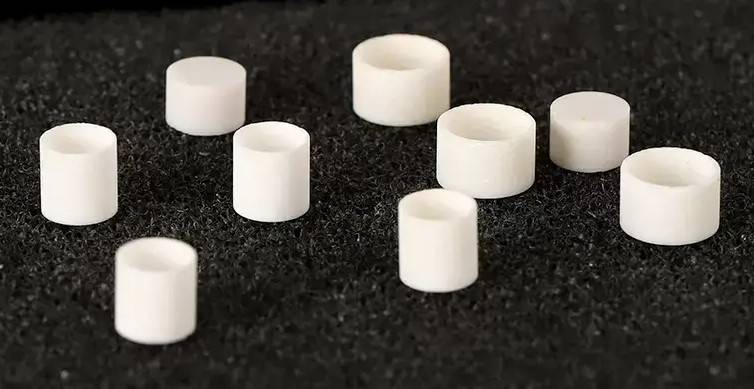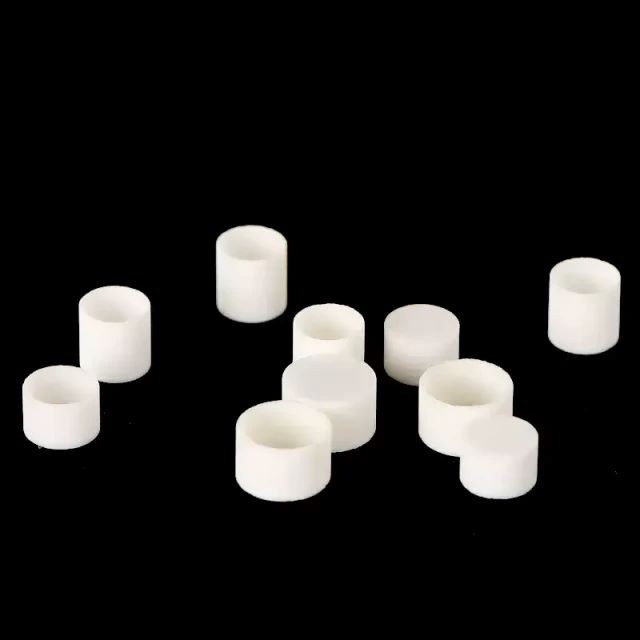
fine ceramics
Alumina Crucibles (Al2O3) Covered Thermal Analysis / TGA / DTA
Item Number : KM-C04
Price varies based on specs and customizations
- Material
- Aluminum oxide
- Specification
- See the form

Shipping:
Contact us to get shipping details Enjoy On-time Dispatch Guarantee.
Application
Thermal analysis is a technique used to study the physical and chemical properties of materials as their temperature changes. It provides information on phase transitions, decompositions, reactions, and other thermal events. A corundum alumina crucible is a crucible made of either corundum or alumina (two forms of alumina). Corundum is a crystalline form of alumina, and these materials are known for their high melting point, excellent thermal stability and resistance to chemical attack. The use of corundum alumina crucibles in TGA/DTA experiments enables high temperature analysis of samples. Crucibles are used as containers for sample material and are able to withstand the high temperatures involved in the analysis. It provides a stable environment for the sample during heating and cooling cycles, ensuring accurate measurements and preventing contamination.
Corundum alumina crucibles are commonly used for thermal analysis, especially TGA/DTA experiments where high temperature and thermal stability are required. They have applications in various industries and fields of research, including:
- Materials Science: Corundum alumina crucibles are commonly used to analyze the thermal behavior, phase transition, decomposition and reaction of various materials.
- Metallurgy: Used to study the thermal properties and behavior of metals and alloys, including melting and solidification processes, phase transformations, and thermal stability of metallic materials.
- Catalyst characterization: A corundum alumina crucible was used to investigate the thermal stability, activation and degradation of catalyst materials under different temperature conditions.
- Environmental Science: These crucibles are used in environmental research to study the thermal behavior and decomposition of organic and inorganic compounds, pollutants and waste materials.
- Pharmaceutical and chemical industry: for analyzing the thermal properties and stability of pharmaceutical compounds, chemicals and additives to ensure their quality and suitability for various applications.
- Quality Control and Research: Analyze the thermal properties of materials, study their thermal stability, and determine the presence of impurities or contaminants.
Detail & Parts
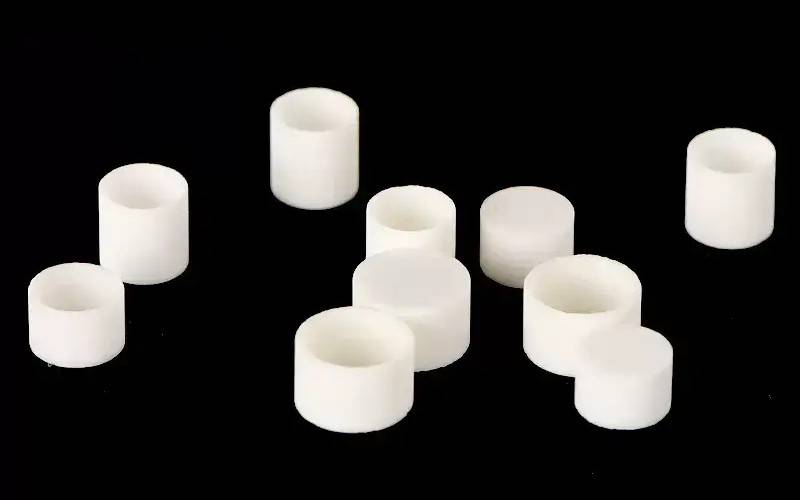
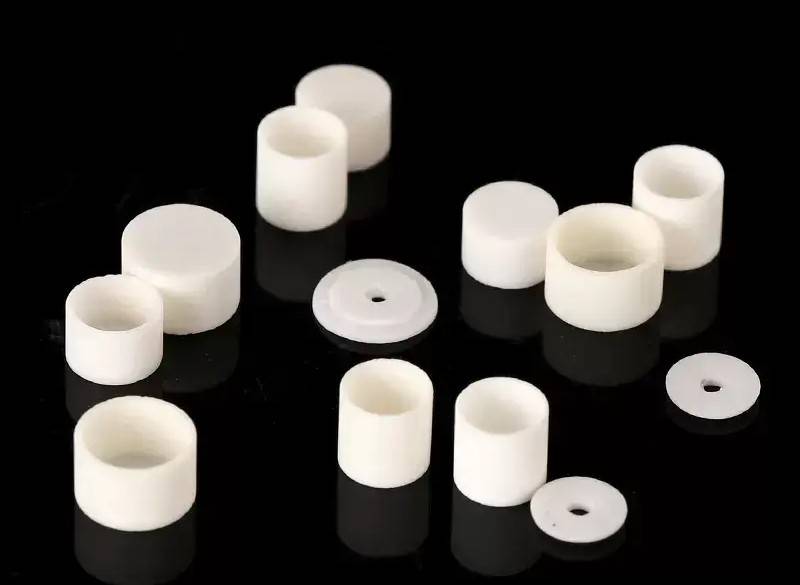
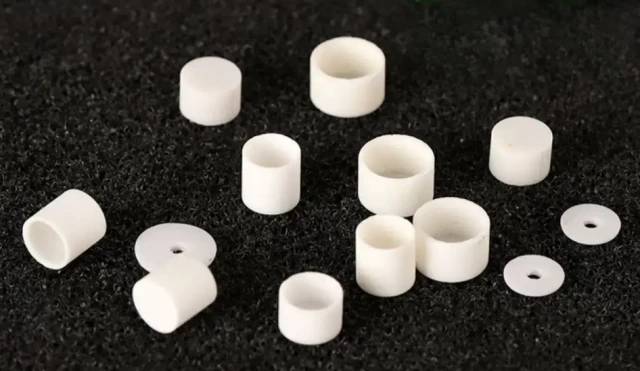

| Fine grinding | Alumina content: 99.5% | Alumina content is high in purity,Relatively low alumina content. | Color: pure white | High-purity alumina is slightly yellowed after firing | Fine grinding outer circle | Precise size, fine processing, no impurity particles |
| Regular | Alumina content:95% | less interference to the experiment | Color: yellowish | 95% alumina is pure white in color after firing | Unground outer circle | Regular for thermal analysis, not finely ground |
Technical specifications
| ф 5x2.5 regular models | ф 10x10 Regular | Ф6.5x4 fine grinding | Ф5x5 conventional | Ф5mm cover fine grinding | ф 6.8x4 regular model | Ф5.88x12.77 fine grinding | Ф6x4 fine grinding |
| ф 6x4.5 regular models | Ф5x3 fine grinding | ф 12x12 Regular | Ф6.5x8 fine grinding | Ф5x8 Regular | ф 6mm lid fine grinding | ф 7x4 conventional | Ф9x4 Regular |
| Ф9x4 fine grinding | ф 6.5x4 regular model | Ф5x4 fine grinding | ф 5mm lid regular type | ф 6.5x10 fine grinding | Ф5.3x3.5 fine grinding | ф 6.8mm lid fine grinding | |
| Ф5x2.5 fine grinding | Ф10x10 fine grinding | ф 6.5x8 regular model | Ф5x5 fine grinding | ф6mm cover regular type | Ф6.8x4 fine grinding | ф 6x4 conventional | |
| Ф6x4.5 fine grinding | Ф5x4 conventional | ф 12x12 fine grinding | ф 6.5x10 regular models | Ф5x8 fine grinding | Ф6.8mm cover regular type | Ф7x4 fine grinding |
The crucibles we show are available in different sizes and custom sizes are available on request.
Advantages
- High temperature resistance: Suitable for analysis of high melting point materials or materials that undergo thermal events at high temperatures.
- Thermal Stability: They maintain structural integrity and do not undergo significant deformation or degradation when exposed to high temperatures.
- Chemically inert: Helps prevent sample contamination and ensures the integrity of experimental results.
- Thermal Shock Resistance: They can withstand rapid temperature changes without cracking or cracking. This property is important when performing heating and cooling cycles during TGA/DTA experiments.
- Durability: They can be reused many times, reducing the cost of analysis compared to disposable crucibles.
- Good thermal conductivity: It can make effective heat transfer between the sample and the surrounding environment. Helps achieve precise temperature control and precise measurements.
Overall, the advantages of corundum alumina crucibles make them ideal for high temperature thermal analysis applications where stability, chemical resistance, and reliability are key factors.
FAQ
What Are The Advantages Of Using Ceramic Crucibles?
What Are The Common Applications Of Alumina Crucibles?
What Are Some Common Uses Of Ceramic Crucibles?
What Are The Advantages Of Using Alumina Crucibles?
How Can I Choose The Right Ceramic Crucible For My Application?
How Should Alumina Crucibles Be Handled And Maintained?
How Should Ceramic Crucibles Be Handled And Maintained?
4.9
out of
5
These crucibles are an excellent choice for high-temperature analysis. They're durable, accurate, and can withstand rapid temperature changes.
4.8
out of
5
The crucibles arrived quickly and were well-packaged. They're exactly as described and have performed flawlessly in our experiments.
4.7
out of
5
These crucibles are a great value for the price. They're made of high-quality materials and have lasted through multiple experiments.
4.6
out of
5
I'm very happy with these crucibles. They're easy to use and clean, and they've given me consistent results.
4.7
out of
5
These crucibles are a great addition to our lab. They're durable and accurate, and they've helped us to improve the quality of our research.
4.8
out of
5
I highly recommend these crucibles. They're a great value for the price and have performed flawlessly in our experiments.
4.9
out of
5
These crucibles are a must-have for any lab that does high-temperature analysis. They're durable, accurate, and easy to use.
4.7
out of
5
I'm very impressed with these crucibles. They're well-made and have given me consistent results in my experiments.
REQUEST A QUOTE
Our professional team will reply to you within one business day. Please feel free to contact us!
Related Products

Alumina (Al2O3) Ceramic Crucible Semicircle Boat with Lid
Crucibles are containers widely used for melting and processing various materials, and semicircular boat-shaped crucibles are suitable for special smelting and processing requirements. Their types and uses vary by material and shape.

Alumina (Al2O3) Ceramic Crucible For Laboratory Muffle Furnace
Alumina ceramic crucibles are used in some materials and metal melting tools, and flat-bottomed crucibles are suitable for melting and processing larger batches of materials with better stability and uniformity.

Alumina (Al2O3) Crucible With Lid Cylindrical Laboratory Crucible
Cylindrical Crucibles Cylindrical crucibles are one of the most common crucible shapes, suitable for melting and processing a wide variety of materials, and are easy to handle and clean.

Aluminum Oxide (Al2O3) Protective Tube - High Temperature
Alumina oxide protective tube, also known as high temperature resistant corundum tube or thermocouple protection tube, is a ceramic tube mainly made of alumina (aluminum oxide).

Alumina (Al2O3) Furnace Tube - High Temperature
High temperature alumina furnace tube combines the advantages of high hardness of alumina, good chemical inertness and steel, and has excellent wear resistance, thermal shock resistance and mechanical shock resistance.

Alumina (Al2O3) Plate-High Temperature and Wear-Resistant Insulating
High temperature wear-resistant insulating alumina plate has excellent insulation performance and high temperature resistance.

Alumina (Al2O3) Ceramic Rod-Insulated
Insulated alumina rod is a fine ceramic material. Alumina rods have excellent electrical insulating properties, high chemical resistance and low thermal expansion.
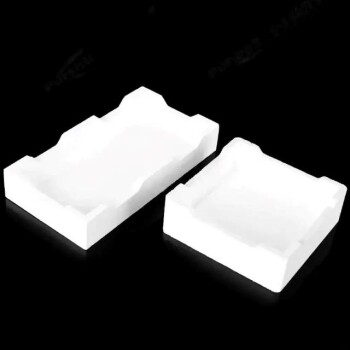
Alumina Ceramic Saggar - Fine Corundum
Alumina sagger products have the characteristics of high temperature resistance, good thermal shock stability, small expansion coefficient, anti-stripping, and good anti-powdering performance.

Evaporation Crucible for Organic Matter
An evaporation crucible for organic matter, referred to as an evaporation crucible, is a container for evaporating organic solvents in a laboratory environment.

Vessels for high temperature applications, where materials are kept at extremely high temperatures to evaporate, allowing thin films to be deposited on substrates.

In the context of electron gun beam evaporation, a crucible is a container or source holder used to contain and evaporate the material to be deposited onto a substrate.

Aluminized ceramic evaporation boat
Vessel for depositing thin films; has an aluminum-coated ceramic body for improved thermal efficiency and chemical resistance. making it suitable for various applications.

Electron Beam Evaporation Coating Conductive Boron Nitride Crucible (BN Crucible)
High-purity and smooth conductive boron nitride crucible for electron beam evaporation coating, with high temperature and thermal cycling performance.

Electron Beam Evaporation Coating Tungsten Crucible / Molybdenum Crucible
Tungsten and molybdenum crucibles are commonly used in electron beam evaporation processes due to their excellent thermal and mechanical properties.

Alumina Zirconia Special-Shaped Parts Processing Custom-Made Ceramic Plates
Alumina ceramics have good electrical conductivity, mechanical strength and high temperature resistance, while zirconia ceramics are known for their high strength and high toughness and are widely used.

Electron Beam Evaporation Graphite Crucible
A technology mainly used in the field of power electronics. It is a graphite film made of carbon source material by material deposition using electron beam technology.

Electron Beam Evaporation Coating Oxygen-Free Copper Crucible
Electron Beam Evaporation Coating Oxygen-Free Copper Crucible enables precise co-deposition of various materials. Its controlled temperature and water-cooled design ensure pure and efficient thin film deposition.

Explosive Proof Hydrothermal Synthesis Reactor
Enhance your lab reactions with Explosive Proof Hydrothermal Synthesis Reactor. Corrosion-resistant, safe, and reliable. Order now for faster analysis!
Related Articles

Ceramic Alumina Crucible for Thermal Analysis Test Containers
An in-depth guide on selecting and using ceramic alumina crucibles for thermal analysis tests, focusing on factors affecting test results.

How To Turn XRF analysis sample preparation Into Success
In X-ray fluorescence (XRF) analysis, sample preparation is an important step because it can significantly impact both the quality and the efficiency of the analysis.

Introduction to Various Ceramic Crucibles
An overview of different types of ceramic crucibles, their properties, and applications.

Alumina Crucibles in Precision Casting
Explores the use of alumina crucibles in precision casting, focusing on their properties and advantages in high-temperature alloy melting.

Comparison of Pyrolytic Graphite and Pyrolytic Boron Nitride Crucibles
A detailed comparison of pyrolytic graphite and pyrolytic boron nitride crucibles, focusing on their preparation processes, characteristics, and applications.

Graphite Crucible in the Future Production of Third Generation Semiconductor Compounds
Explores the role and future trends of graphite crucibles in the production of third-generation semiconductor materials.

Comprehensive Guide to Alumina Crucibles in Powder Metallurgy
An in-depth look at the properties, applications, and usage of alumina crucibles in powder metallurgy processes.

The Role and Types of Crucibles in Scientific Experiments
Explores the significance and various types of crucibles in scientific experiments, focusing on their materials and applications.

High Purity Graphite Crucible: Features, Production, and Usage
An in-depth look at high purity graphite crucibles, their production processes, and their industrial applications.

Inorganic Non-Metallic Materials: Crucibles
An overview of crucibles made from various inorganic non-metallic materials, their uses, technical parameters, and advantages.

Guidelines for the Use of Boron Nitride Crucibles
Instructions on the proper use, precautions, and compatibility of boron nitride crucibles.

Substances Suitable for Calcination in a High-Temperature Muffle Furnace
An overview of materials and experiments suitable for calcination in a high-temperature muffle furnace.
